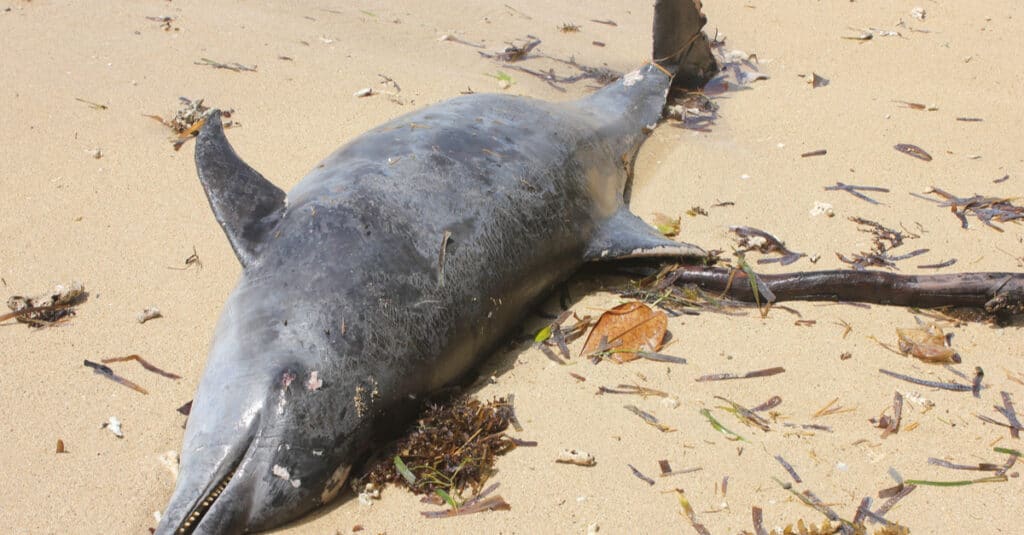The Bazaruto Archipelago, located along the Mozambican coast, was the scene of a desolate spectacle during the nights of 21 and 23 February 2021. Some 118 long-billed dolphins, 32 in the first wave and 86 in the second, ran aground en masse. The balance of the two incidents shows 111 dead dolphins, and seven others pushed back into the Mozambique Channel by African Parks agents. It was with dismay that the conservation non-governmental organisation (NGO) announced the news. “Given what happened on those two days, we recognise that there could be further dolphin stranding events. Therefore, we continue to monitor the situation and do what we can to avoid further cases. ”says African Parks.
The circumstances and causes of this series of dolphin stranding’s remain unknown. However, initial hypotheses suspect phenomena such as tidal fluctuations, algae blooms and magnetic or geological disturbances. To get to the heart of the matter, African Parks is currently analysing samples taken from a few dolphin carcasses. These analyses are done in collaboration with the National Administration of Conservation Areas (ANAC) and the Cetacean Specialist Group of the International Union for Conservation of Nature (IUCN).
Second mass stranding in the tropics in nearly a year
We speak of collective stranding or mass stranding of dolphins when two or more individuals strand in the same geographical area and during the same tidal cycle. The Group for Research and Education on Marine Mammals (GREMM) highlights many hypotheses regarding the causes of this phenomenon, about which the mystery persists. Given that dolphins have a very strong social cohesion, it is therefore likely that if one of them encounters difficulties and runs aground, the rest of the group will follow it. A group trying to escape from a predator, getting closer to the coast to escape, could also come to run aground involuntarily. In addition, an unknown topography such as flat, sandy or muddy bottoms and gentle slopes can make it more difficult for dolphins to navigate.
The last massive and mysterious stranding of dolphins in the tropics occurred on 24 September 2019 off Cape Verde. The rescuers had counted 136 remains (Electra or pepinocephalic dolphins), suggesting that some of the 163 victims had returned to sea.
Boris Ngounou
